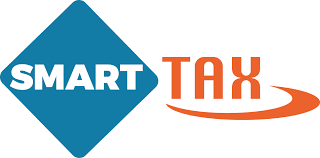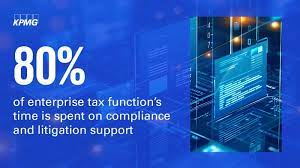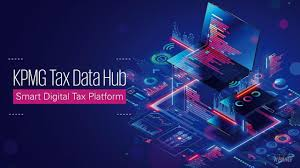Now Reading: Smart Tax Collection Systems: Shaping Future Success
-
01
Smart Tax Collection Systems: Shaping Future Success
Smart Tax Collection Systems: Shaping Future Success

Table of Contents
Smart Tax Collection Systems: The global tax landscape is undergoing a radical transformation, moving swiftly from traditional, often cumbersome, manual processes to sophisticated, data-driven “smart tax collection systems.” Driven by technological advancements, evolving taxpayer expectations, and the imperative to maximize revenue while minimizing fraud, these innovative systems are redefining efficiency, transparency, and compliance for governments and citizens alike. As of May 2025, smart tax collection is no longer a concept of the future but a rapidly expanding reality, with a projected market value of $15 billion this year and a robust growth trajectory towards $45 billion by 2033.
The Essence of Smart Tax Collection

Smart tax collection systems leverage cutting-edge digital technologies to automate, streamline, and optimize every facet of tax administration, from registration and filing to payment, audit, and dispute resolution. The core aim is to create an intelligent, proactive, and taxpayer-centric ecosystem that enhances voluntary compliance and ensures fair and effective revenue generation.
Key components at the heart of these modern systems include:
- Integrated Digital Platforms: Centralized online portals and mobile applications that serve as a single, intuitive point of contact for taxpayers to manage all their tax obligations, access information, and communicate with tax authorities.
- Automated Data Collection and Processing: Utilizing technologies like Optical Character Recognition (OCR) and Application Programming Interfaces (APIs) to automatically extract, validate, and process financial data from various sources (e.g., e-invoices, bank statements, third-party reports), significantly reducing manual data entry and errors.
- Real-time Reporting (RTR) and E-invoicing: Mandating businesses to electronically submit transaction data and invoices to tax authorities in near real-time. This provides immediate visibility into economic activity, enhances Value Added Tax (VAT)/Goods and Services Tax (GST) compliance, and enables instant fraud detection.
- Advanced Analytics and Big Data: Employing sophisticated algorithms to analyze vast datasets from internal and external sources. This powers predictive modeling for compliance risk assessment, identifies fraudulent patterns, forecasts revenue, and provides actionable insights for policy formulation.
- Artificial Intelligence (AI) and Machine Learning (ML): Crucial for automating complex cognitive tasks. AI-powered chatbots handle routine taxpayer inquiries, while ML algorithms detect anomalies and flag high-risk taxpayers for targeted interventions. Agentic AI systems are emerging, promising to automate decision-making with minimal human oversight.
- Robotic Process Automation (RPA): Automating repetitive, rule-based administrative tasks such as data reconciliation, payment processing, and generation of standard communications, thereby enhancing speed and accuracy.
- Blockchain and Distributed Ledger Technology (DLT): While still in nascent stages for broad tax collection, DLT offers potential for creating immutable and transparent records of transactions, particularly for VAT/GST systems and tracking digital assets. Pilot programs are exploring its use for enhanced data reliability and fraud reduction.
- Cloud Computing: Provides scalable, secure, and cost-effective infrastructure for hosting complex tax administration systems, ensuring high availability and seamless updates.
Unlocking Efficiency and Combating Fraud
Smart tax collection systems are fundamentally improving tax administration in several critical ways:
- Boosted Operational Efficiency: Automation reduces manual workload, paper usage, and processing times, leading to significant cost savings for tax agencies. Resources previously tied up in administrative tasks can be reallocated to strategic functions like complex audits or taxpayer education.
- Enhanced Compliance: By simplifying filing processes, offering pre-filled returns, and providing instant guidance, these systems make it easier for taxpayers to comply voluntarily. The shift to real-time reporting makes non-compliance more difficult to conceal.
- Superior Fraud Detection: AI and ML algorithms can identify complex patterns and anomalies in data that human analysts might miss, enabling proactive identification of suspicious activities and preventing revenue leakage from fraud, evasion, and misclassification. For instance, blockchain’s immutable records can drastically reduce VAT fraud by ensuring transaction traceability.
- Accelerated Revenue Collection: Real-time visibility of transactions allows for more immediate and accurate tax assessments and collections, leading to improved cash flow for governments.
- Data-Driven Policymaking: Granular, real-time data provides tax authorities with unprecedented insights into economic trends and taxpayer behavior, enabling more informed and agile fiscal policy adjustments.
Benefits for Taxpayers and Governments

The shift to smart tax collection delivers substantial advantages to both sides of the tax equation:
For Governments and Tax Authorities:
- Increased Revenue: More efficient collection and reduced fraud directly translate to higher tax revenues, which can be reinvested in public services and development.
- Reduced Administrative Burden: Automation drastically cuts down on paperwork, manual processing, and the associated operational costs.
- Improved Audit Capabilities: Moving from reactive to proactive, data-driven audits allows for more targeted and effective enforcement.
- Greater Agility: The ability to quickly adapt to changing economic conditions and policy requirements through flexible digital systems.
- Enhanced Reputation: A transparent, efficient, and fair tax system builds public trust and confidence.
For Taxpayers:
- Simplified Compliance: Intuitive online portals, pre-filled returns, and mobile apps make filing and payment easier and less time-consuming.
- Reduced Compliance Costs: Businesses save time and money on manual processes, data reconciliation, and professional fees.
- Faster Refunds and Services: Automated processing leads to quicker turnaround times for refunds and responses to inquiries.
- Increased Transparency: Taxpayers can easily track their filing and payment status, review their records, and understand their obligations.
- Personalized Support: AI-powered tools and data analytics can offer tailored advice and reminders, improving the overall taxpayer experience.
Implementation Challenges
Despite the overwhelming benefits, the journey to fully intelligent tax collection systems faces several hurdles:
- Legacy System Integration: Many tax administrations operate with outdated IT infrastructure. Seamlessly integrating new smart systems with these entrenched legacy platforms is a complex and costly technical challenge.
- Cybersecurity and Data Privacy: The aggregation of vast amounts of sensitive financial data creates attractive targets for cyber threats. Robust cybersecurity frameworks and strict adherence to data privacy regulations (e.g., GDPR) are non-negotiable.
- Digital Divide: Ensuring equitable access and digital literacy across the entire taxpayer population, especially in developing economies or among older demographics, is a significant social challenge.
- Legal and Regulatory Reform: Existing tax laws and regulations often need to be updated to accommodate real-time reporting mandates, e-invoicing, and the legal recognition of automated decisions and smart contracts.
- Talent and Skill Gaps: Tax authorities need to acquire new expertise in data science, AI, cybersecurity, and cloud management, requiring substantial investment in training and upskilling their workforce.
- Resistance to Change: Overcoming inertia and resistance from both internal staff and taxpayers accustomed to traditional methods can be a significant change management challenge.
- High Initial Investment: The upfront costs of developing and deploying advanced smart tax systems can be substantial, particularly for smaller economies.
Global Trends and Future Outlook (2025-2026)
Numerous countries are leading the charge in implementing smart tax collection systems:
- European Union: The “VAT in the Digital Age” (ViDA) proposals are driving widespread adoption of mandatory e-invoicing and real-time reporting for intra-EU transactions, with significant pilot programs and full implementation expected by 2026. This aims to close the substantial VAT gap.
- Latin America: Countries like Brazil and Mexico have been pioneers in mandatory electronic invoicing (e.g., Nota Fiscal Eletrônica in Brazil, CFDI in Mexico), providing their tax authorities with real-time transaction data for decades.
- Asia-Pacific: India’s GST Network stands as one of the world’s largest digital tax infrastructures, enabling real-time invoice matching. Countries like Singapore and South Korea continuously refine their digital tax services, leveraging AI for risk assessment and taxpayer support. Vietnam is piloting blockchain for digital asset tax frameworks to track crypto transactions.
- OECD and IMF: These international bodies consistently advocate for digital transformation in tax administration, providing guidance and frameworks for countries to adopt smart collection systems, emphasizing the benefits of data analytics and real-time reporting.
Looking ahead to 2025 and 2026, the evolution of smart tax collection systems will intensify:
- Ubiquitous Real-time Reporting: The trend towards continuous transaction controls (CTC) will accelerate, with more countries implementing e-invoicing and real-time data submission to gain instant visibility into economic activity.
- Advanced AI and Predictive Analytics: AI will move beyond simple anomaly detection to more sophisticated predictive compliance, even anticipating taxpayer needs and proactively suggesting actions, potentially leading to “invisible tax” or “tax-by-design” where compliance is largely automated within business processes.
- Deeper Integration of Blockchain: While widespread direct tax collection via blockchain remains a longer-term prospect, its use for tracking specific assets (e.g., digital currencies, supply chain goods for excise duties) and enhancing audit trails will expand through pilot projects.
- Increased Focus on Digital Identity: Secure, blockchain-based or centralized digital identity systems will become foundational for seamless and secure taxpayer interactions.
- Enhanced Cybersecurity and Privacy-Preserving Technologies: As more data is collected, the emphasis on robust cybersecurity, data anonymization techniques, and privacy-enhancing technologies (PETs) like federated learning will become even more critical.
- Harmonization and Interoperability: International cooperation will grow to establish common standards and protocols for digital tax administration, facilitating cross-border data exchange and reducing compliance burdens for multinational entities.
In conclusion, smart tax collection systems are reshaping the very fabric of tax administration. By harnessing the power of digital technologies, governments are not only enhancing their revenue collection capabilities and combating fraud but also delivering a more transparent, efficient, and user-friendly experience for taxpayers, paving the way for a truly modern and resilient fiscal future.
WATCH MORE: https://www.youtube.com/watch?v=BtHaQl-o1Ow
READ MORE: E-Government Initiatives in Tax Administration: Unlocking Seamless Success





















